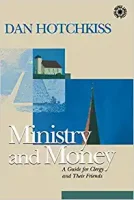
Years ago a bright Yale student asked me how I would describe the difference between a church and any other charitable group. I gave the sort of answer I imagine many of us might give. I emphasized the church’s unique life-transforming mission and its special responsibility to transmit precious traditions across generations.
It was a good answer, but today I am afraid I’d have to add that of all nonprofits, congregations—and especially mainstream, relatively liberal ones—are among the most cautious and least willing to accept risk in order to fulfill their mission. We’re not alone. Many sleepy charities, government agencies, and old-line businesses also avoid risk. But where risk is concerned, many congregations fall into the slow group.
Risk and talents
This is ironic, because our traditions encourage risk as part of good stewardship. The Parable of the Talents, for example, is about risk. The “good” servants whom the master rewarded for managing his money wisely were daring and venturesome. The “bad” servant was the cautious one. He invested, so to speak, in federally insured bank deposits with a guaranteed return of zero. Actually it’s worse than that—because of inflation, a “guaranteed” investment can be expected to lose value.
The good servants chose the riskier portfolios. Jesus rewarded them—but as the saying goes, past performance does not predict future returns. Risk is risk; they could have lost their master’s money. I can’t help wondering: what would Jesus have done then?
Responding to a good idea
Consider what happens in your congregation when somebody comes up with an innovative idea. In most nonprofits, a staff member or senior volunteer vets such ideas for consistency with mission, plans, and vision. If an idea passes muster, it goes to someone, usually another staff member, with the power to OK both the idea and the necessary resources. It is up to that decision-maker to seek necessary input and support. Major decisions get passed up to the executive director, who may ask advice from the board before deciding to approve the money, staff, and other resources to carry out the plan.
Too many congregations respond to new ideas very differently. The first response is often, “If you’re willing to take charge, go ahead!” Then, after a pause: “Unless, of course, you need money. In that case you’d have to ask a committee to allocate some of its budget. If you need a budget increase, then the finance committee needs to pass on it, and on their recommendation the board might or might not say OK. Or sometimes things go to the board first, then finance. If your idea would require new staff, you have to go to the personnel committee—but honestly, you might as well forget it. The senior minister has wanted an associate for years. The music director has been asking for a youth choir director since VE Day. There’s no way any other staff will be approved until those two get what they want or die.”
Learning from nonprofits
We who lead congregations have a lot to learn from people who lead other kinds of organizations and especially from the leaders of other nonprofits. Some of you are saying, “But congregations are different, and a pastor is not the same as an executive director.” That is true, but not for the reasons you might think. Churches and synagogues are organized as an expression of religious faith—but that is also true of many charities, whether they are explicitly “faith-based” or not. In non-profit training workshops, I have been impressed with the deep faith that called many of my fellow workshop participants into their vocations.
I was struck by the organizations’ clarity of purpose and ability to take bold steps in changing circumstances. In one case, the childhood disease for which a group was founded had been cured. The board reflected deeply on the question whether their most faithful next step was to dissolve. Instead they decided to reorient themselves to address health issues that threaten children now. How many churches—despite Jesus’s admonition—would be willing to lose their lives in order to find new life in this way? How many synagogues would leave known and familiar Egypt to set out on the bumpy path of promise?
Congregations naturally structure themselves to avoid risk. Successful nonprofits—including many vital congregations—are more willing to risk the treasure in their keeping in an all-out effort to fulfill their mission. Most congregations, by contrast, act as though the Great Commandment simply said, “Exist.”
From the best leaders of nonprofits, we can learn the advantages of a clear decision-making structure that holds leaders accountable. One part of our accountability is for sheltering our common treasure against theft and waste. The other part of our accountability—the part we aren’t so good at—is for the results that can come only when we weigh the stewardship of prudence against the stewardship of risk.
Dan Hotchkiss has consulted with a wide spectrum of churches, synagogues, and other organizations spanning 33 denominational families. Through his coaching, teaching, and writing, Dan has touched the lives of an even wider range of leaders. His focus is to help organizations engage their constituents in discerning what their mission calls for at a given time, and to empower leaders to act boldly and creatively.
Dan coaches leaders and consults selectively with congregations and other mission-driven groups, mostly by phone and videoconference, from his home near Boston. Prior to consulting independently, Dan served as a Unitarian Universalist parish minister, denominational executive, and senior consultant for the Alban Institute.
In a different form, “The Stewardship of Risk”
appeared in the February 2007 issue of Clergy Journal.


